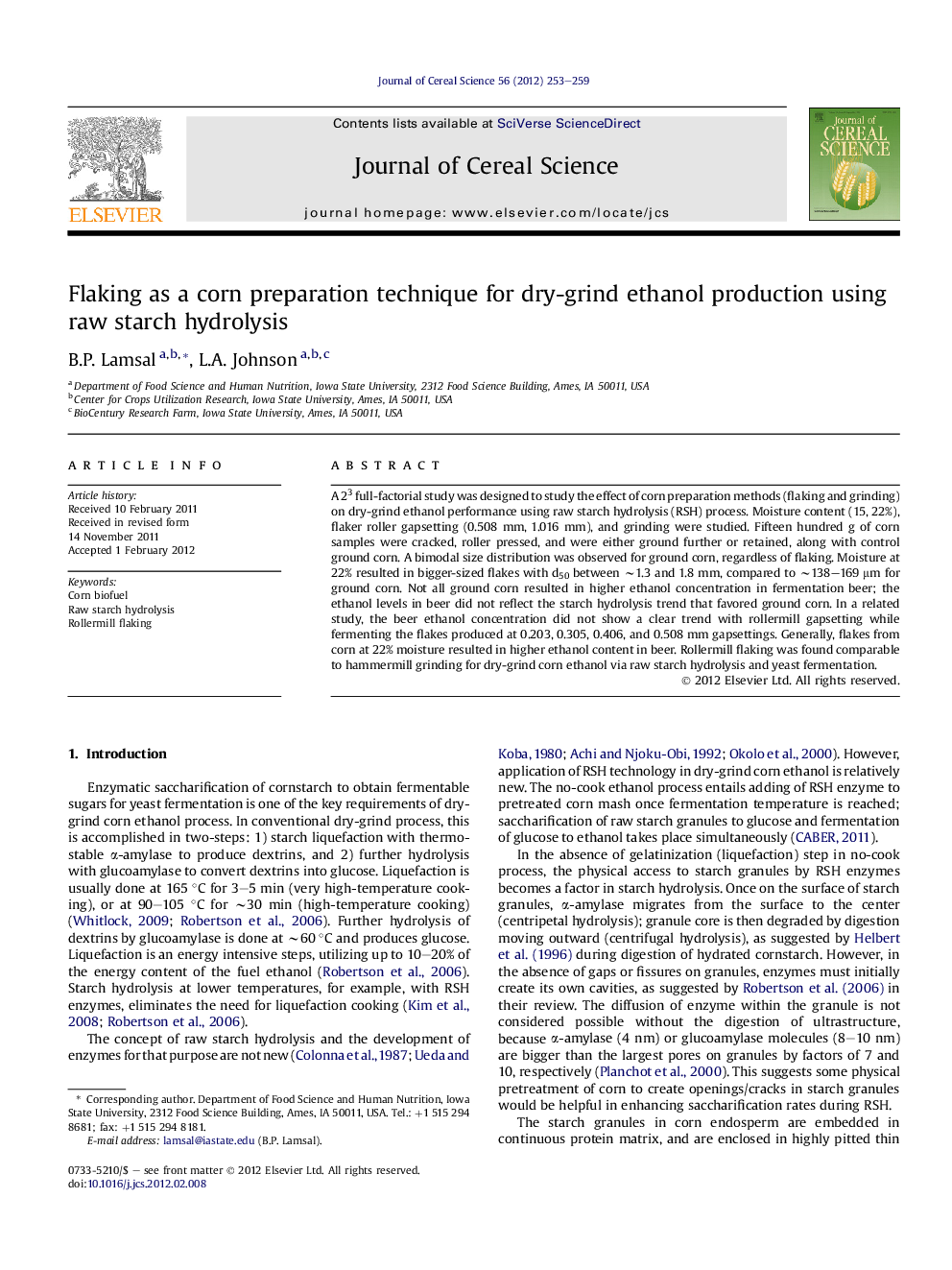| Article ID | Journal | Published Year | Pages | File Type |
|---|---|---|---|---|
| 6378085 | Journal of Cereal Science | 2012 | 7 Pages |
A 23 full-factorial study was designed to study the effect of corn preparation methods (flaking and grinding) on dry-grind ethanol performance using raw starch hydrolysis (RSH) process. Moisture content (15, 22%), flaker roller gapsetting (0.508 mm, 1.016 mm), and grinding were studied. Fifteen hundred g of corn samples were cracked, roller pressed, and were either ground further or retained, along with control ground corn. A bimodal size distribution was observed for ground corn, regardless of flaking. Moisture at 22% resulted in bigger-sized flakes with d50 between â¼1.3 and 1.8 mm, compared to â¼138-169 μm for ground corn. Not all ground corn resulted in higher ethanol concentration in fermentation beer; the ethanol levels in beer did not reflect the starch hydrolysis trend that favored ground corn. In a related study, the beer ethanol concentration did not show a clear trend with rollermill gapsetting while fermenting the flakes produced at 0.203, 0.305, 0.406, and 0.508 mm gapsettings. Generally, flakes from corn at 22% moisture resulted in higher ethanol content in beer. Rollermill flaking was found comparable to hammermill grinding for dry-grind corn ethanol via raw starch hydrolysis and yeast fermentation.
⺠We compared corn preparation methods for dry-grind ethanol via raw starch hydrolysis. ⺠Starch hydrolysis and ethanol concentration for corn preparations were compared. ⺠Flaked corn was â¼10 times more in size than ground corn. ⺠Flaked corn attained similar ethanol levels as ground corn despite being bigger. ⺠Roller gap did not affect the ethanol levels in beer.
